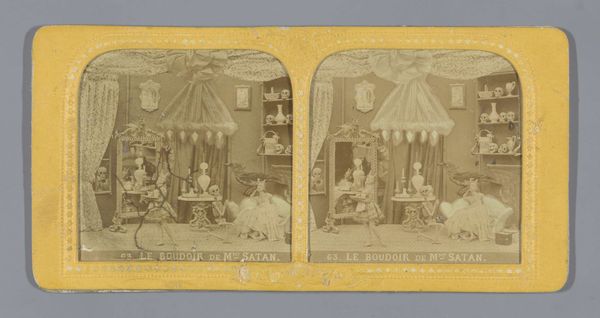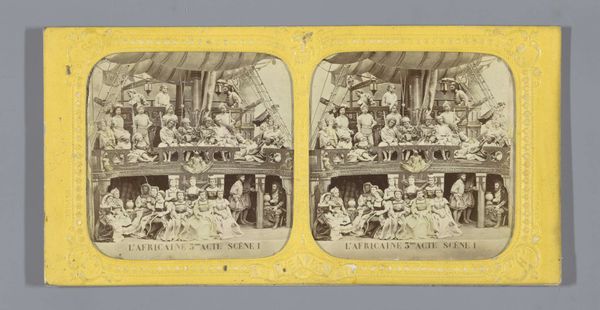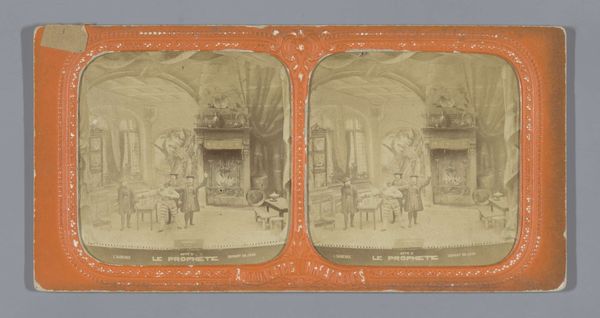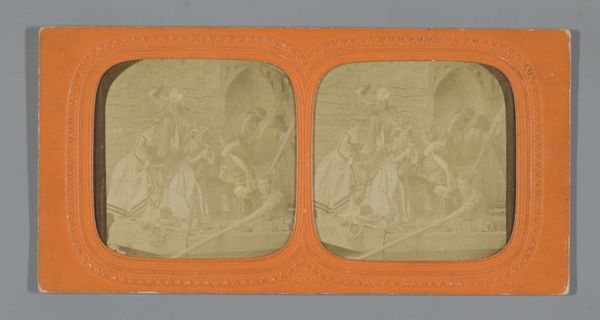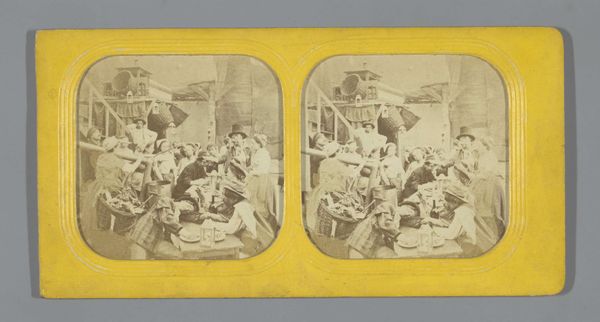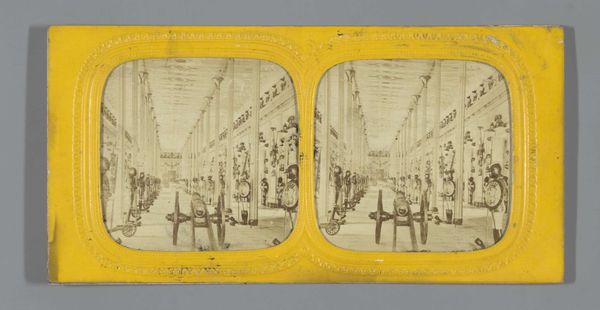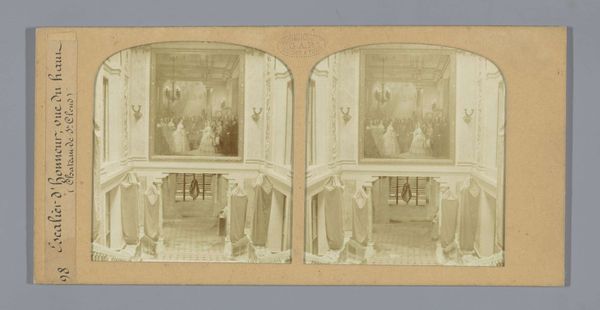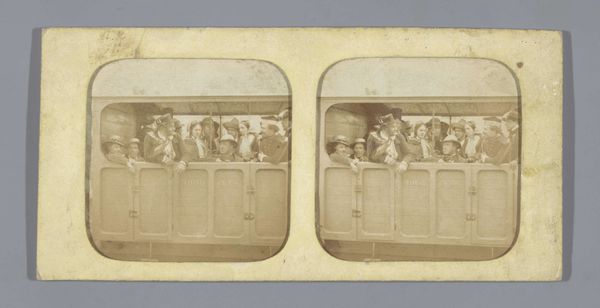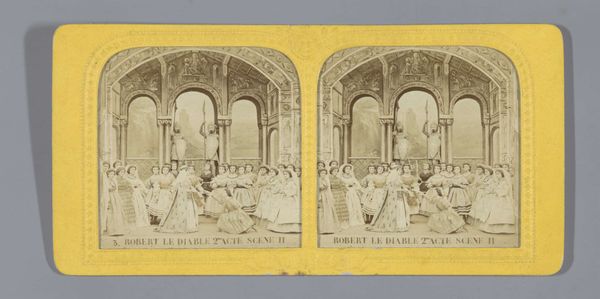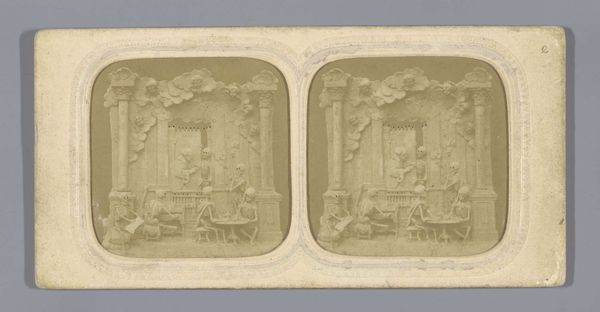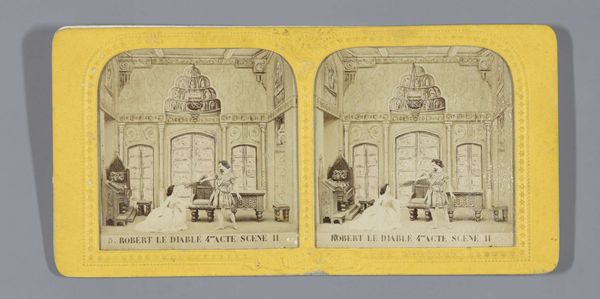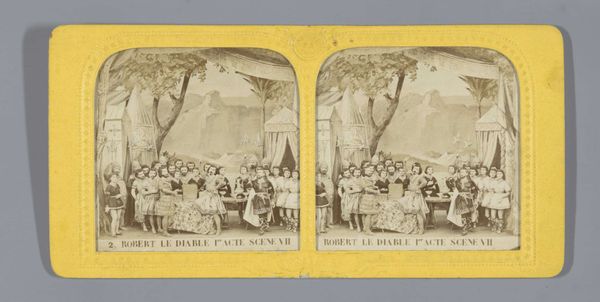
Dimensions: height 89 mm, width 177 mm
Copyright: Rijks Museum: Open Domain
Editor: This is "Man met skeletten in een apotheek," or "Man with Skeletons in a Pharmacy," made between 1868 and 1873. It's an anonymous gelatin silver print here at the Rijksmuseum. It looks like a theatrical scene... sort of macabre and humorous at the same time. What catches your eye about it? Curator: The "Devil's Pills," as the caption suggests. Note how death is not presented as a terrifying event but rather, with a darkly comic flair, emphasizing the pervasiveness and inevitability of mortality in human life through the visual symbols here. How do the skeletons surrounding the central figure shape your understanding? Editor: I see, the skeletons aren't menacing but almost like bystanders, or even colleagues. And the man seems rather nonchalant about the whole affair, like he’s just waiting for his prescription! Does this tell us something about how death was perceived at the time? Curator: Precisely. The scene utilizes symbols rooted in folklore and popular morality plays. Think of the Dance of Death motif, where death is both the great leveler and a constant companion. It’s a kind of *memento mori*—a reminder of mortality—but softened with satire. What do you make of the setting itself? This apothecary, laden with scientific instruments yet presided over by skeletons... Editor: It's a fascinating contrast! Science, meant to prolong life, juxtaposed with these stark symbols of death. It almost suggests the futility of fighting the inevitable. Or maybe even poking fun at the medical profession? Curator: A very astute observation. The humor is a coping mechanism; it lightens the heavy subject. What about the dual images side by side? What effect does that create for you? Editor: Ah, because it was originally viewed with a stereoscope, right? That creates a 3D effect, making the scene even more "real," and more present. It brings the reality of death even closer, and highlights how people engage with the idea of medical “cures”. Curator: Exactly! The symbols invite contemplation about the boundary between life and death and offer ways to cope with the ephemeral nature of existence. Editor: I never thought about mortality in such a playful, performative manner. Curator: Indeed. Cultural memory, isn't it fascinating?
Comments
No comments
Be the first to comment and join the conversation on the ultimate creative platform.

